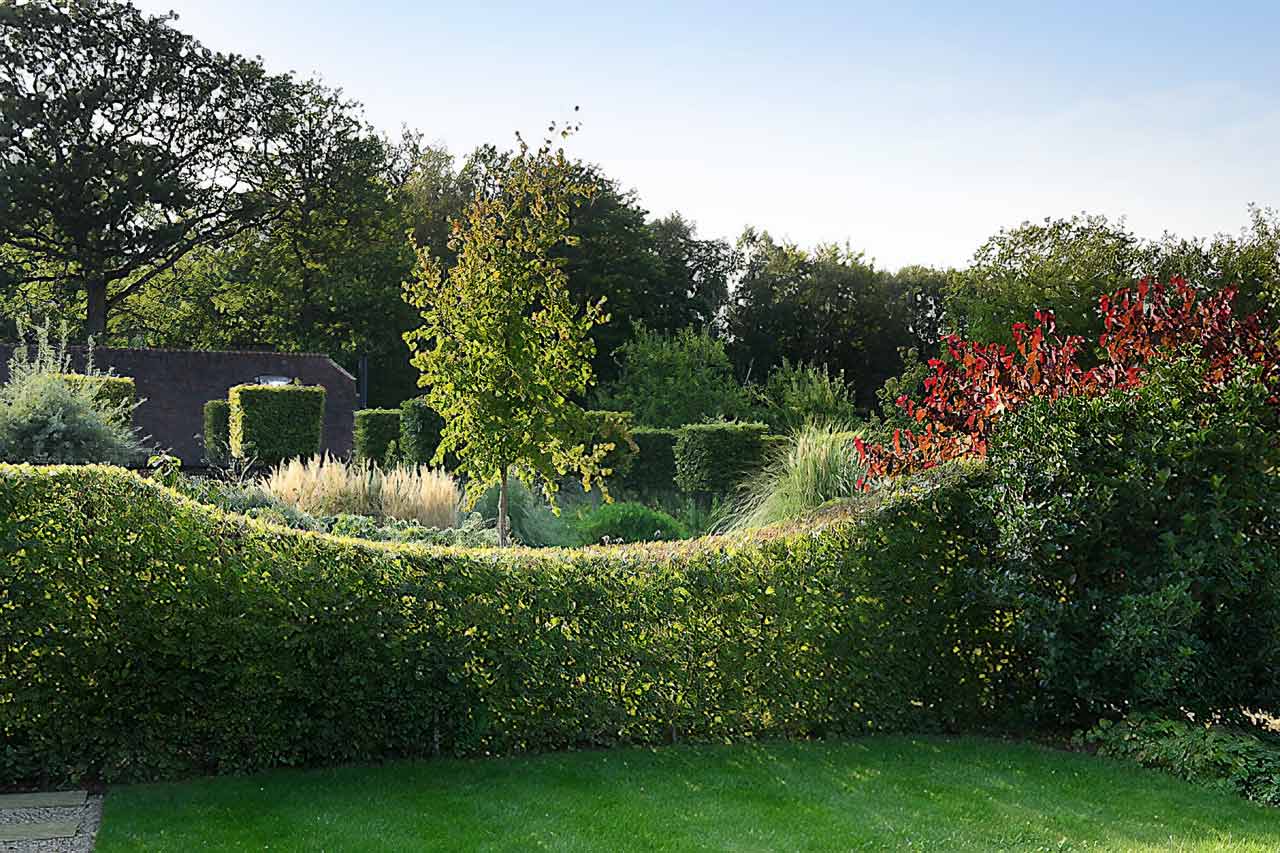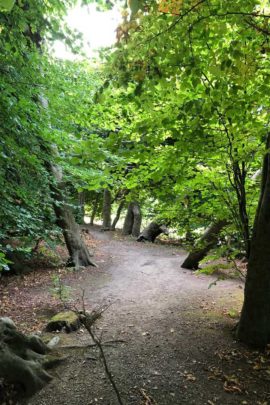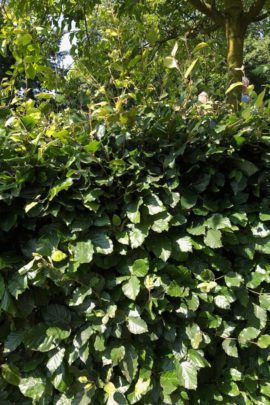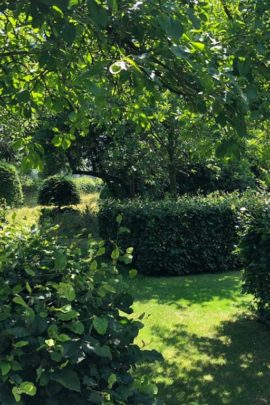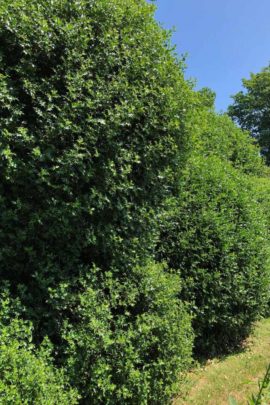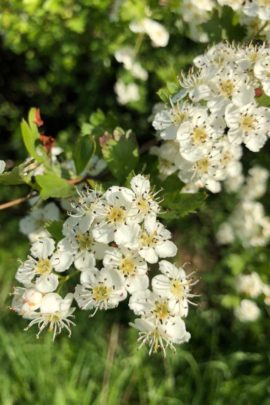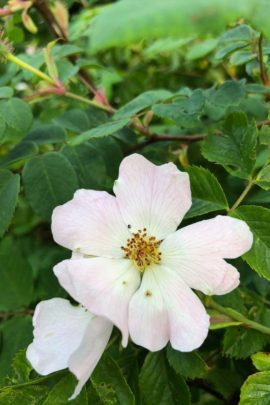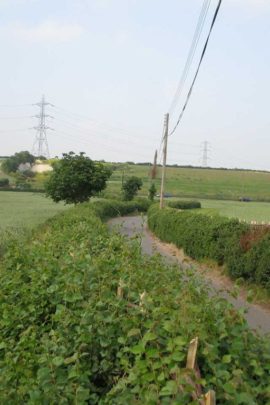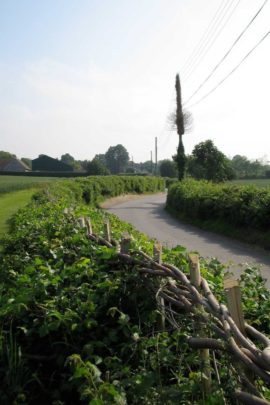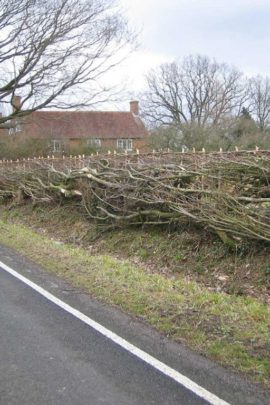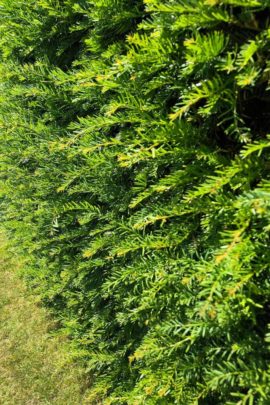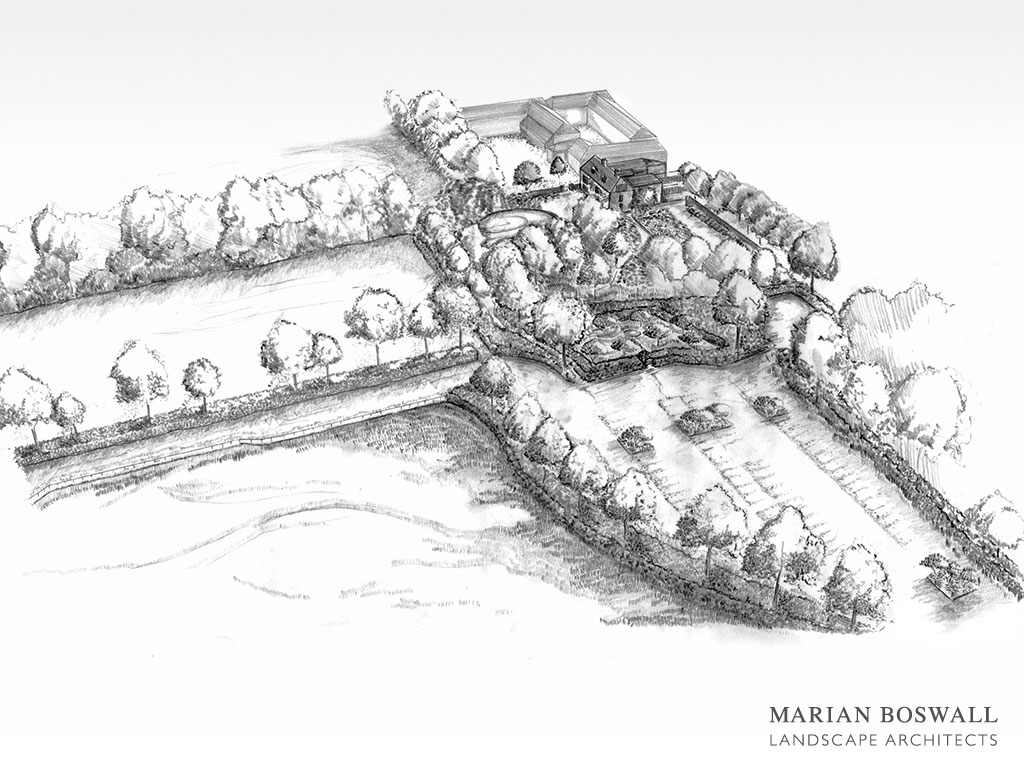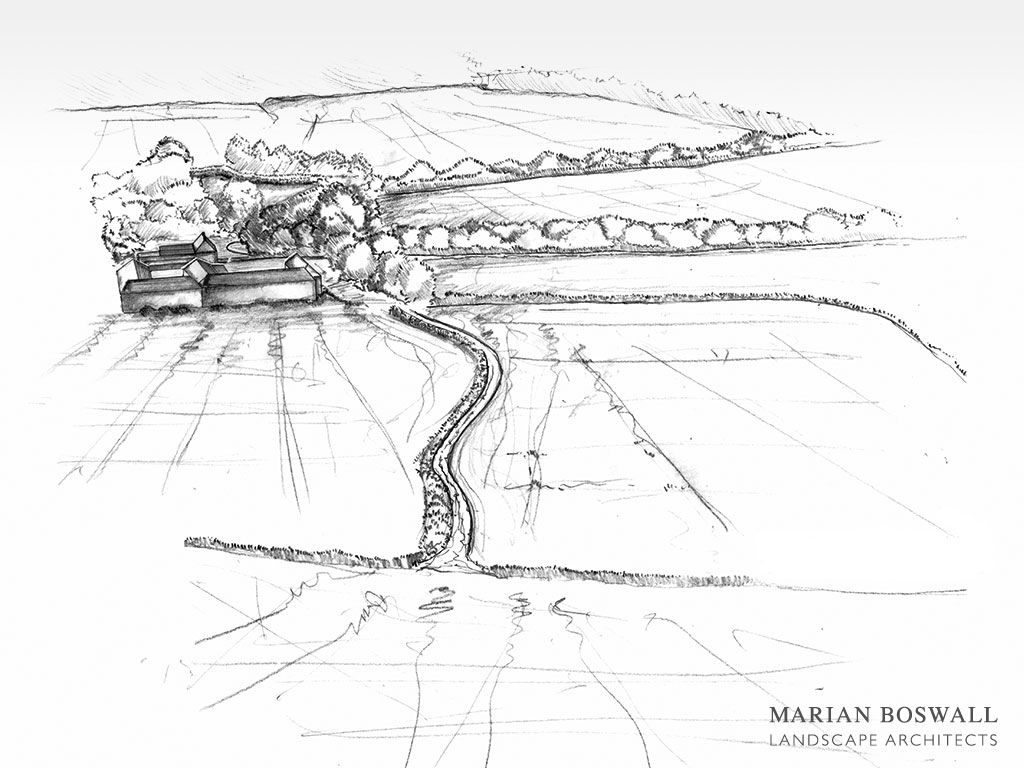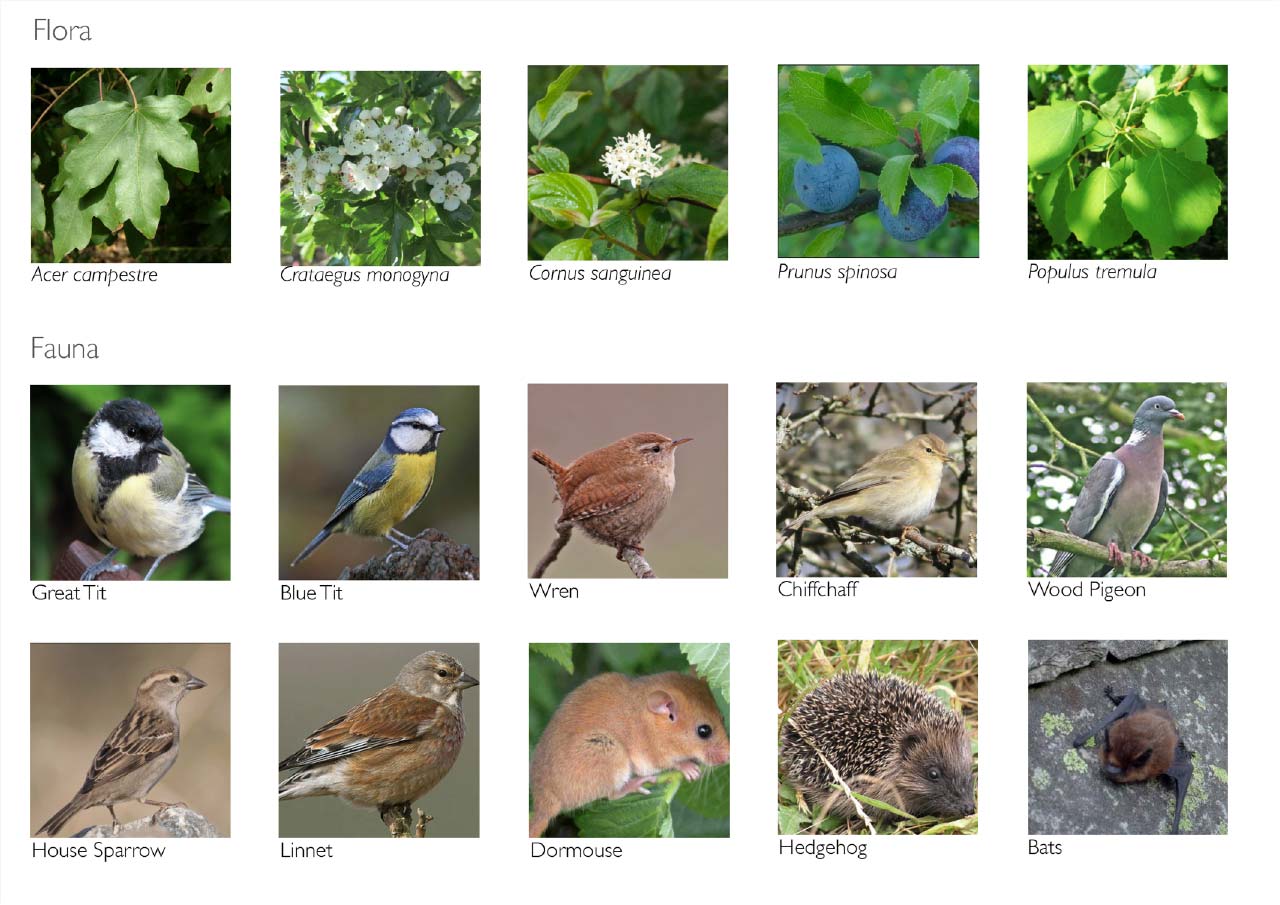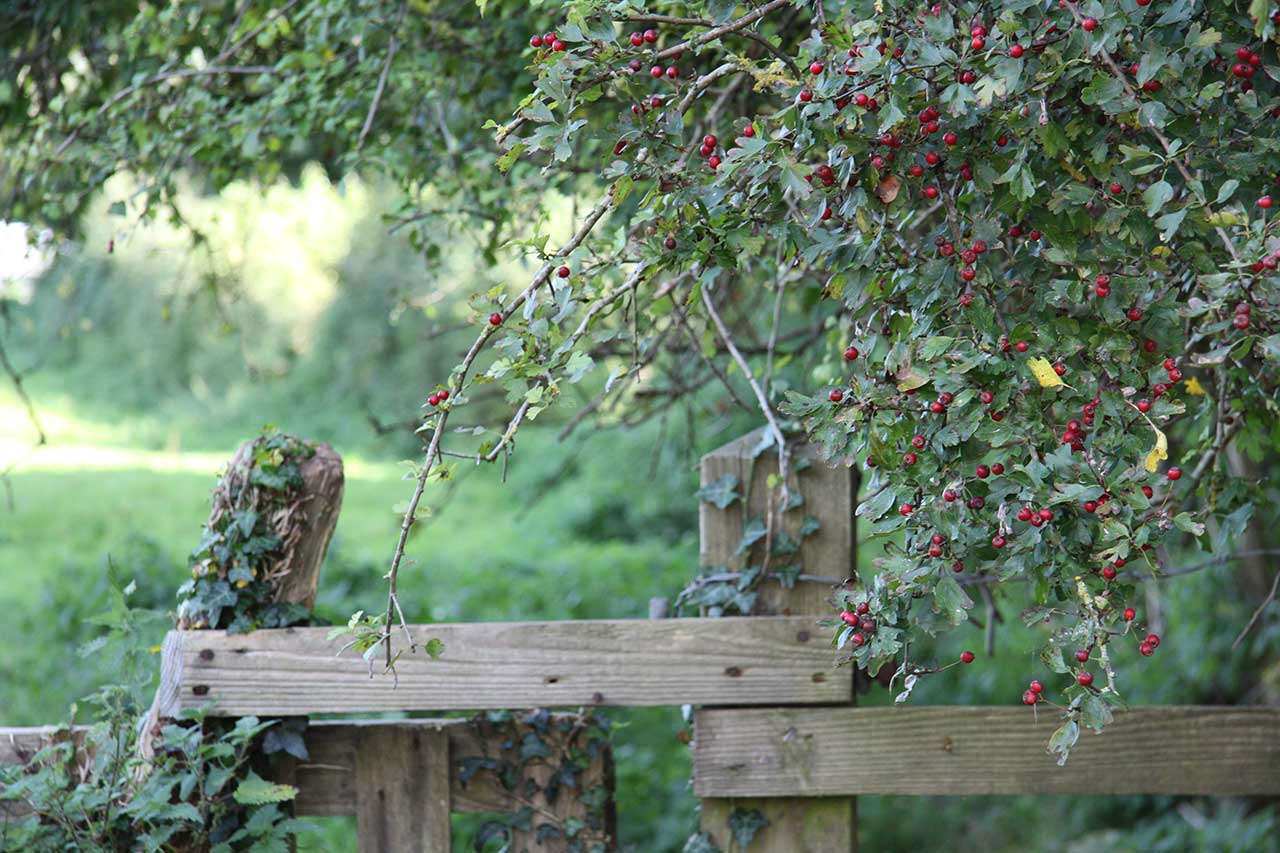Setting Boundaries – Finding The Perfect Hedging For Your Period Property
An Englishman’s home is his castle, but gone are the days of the need for a moat to keep out the marauding beserkers, however we do still like to delineate our property, whether for security or for aesthetics.
So how do we get the boundary treatment right in a period property, so that it is in keeping with what has been before, is cost-effective to build and to maintain and keeps the dogs and children in, and unwelcome visitors out?
There are a variety of ways to suit each property, location and budget. Walls and fences are of course options and important in many locations. I will talk about repairing, reinstating and introducing walls and fences in future issues but as winter is the perfect time to plant and renovate hedging, here I look at ways of renovating an old and establishing a new hedge.
The first thing is to understand the setting and what is there now or has gone before. A rural setting for example may have a country hedge around the garden and in particular to delineate the boundary of the property, along a way which may have become a lane or road.
The hedge that is there may be as old or older than the house and may be of archaeological significance or delineate an ancient Way. Old maps and field plans will show the hedge patterns and can be a good place to start to know the ancient lay of the land and its hedgerows. When we were setting out a new access road for Charleston farmhouse we worked with the old field patterns shown on beautiful old maps to put a new car park within the old “Hogg’s Pitt” field, and so maintain the hedge around it. The result is something less obtrusive from the Firle above as well as on the ground.
Old Hedges can also be dated by counting the number of species in them. ‘Hooper’s Law’ gives us a way to estimate the age of a hedgerow, by counting the number of different species of tree and shrub in a 30 yard stretch and regarding it as equal to the age of the hedge in centuries.
Dr. Hooper’s scheme is important not least for its potential use in determining what an important hedgerow is, given their protection in The Hedgerows Regulations (1997; No. 1160) of the Department of the Environment, based on age and other factors.
This method is only a rule of thumb, so it should always be backed up by documentary evidence, and other factors taken into account. Caveats include the fact that hedgerows with elm and hedgerows in the north of England tend not to follow the rule as closely, and some hedges planted by farmers for stock control tend to be mono-species, hawthorn, blackthorn, and (in the southwest) hazel.
As well as plant species a species-rich hedgerow will be home to many animals, especially birds and small mammals. The hedgerows are the living corridors that link habitats for these animals, and as such are hugely important for biodiversity and the health of the countryside.
A country hedge would traditionally be plashed or layed, by allowing the hedge to grow up to about eight foot and then split with a bill hook (or chainsaw) almost through the stem, just leaving enough to bend it at an angle, and from that cut the new growth will come. Hedgelaying can also restore an old, sparse hedge by encouraging regrowth from the base. Most native species within a mixed hedgerow will respond well. A hedge needs to be a minimum of 2.5 metres high before it can be layed, because laying reduces the height by approximately half. Hedges are best layed between October and March. After laying, maintenance consists of keeping the base free of weeds during the first year and an annual trim.
Where a more formal look is needed a single species hedge can be used such as yew, which will look good inside a town or village or inside a formal garden. Some people are put off by the reputation of yew as slow growing, but it can grow up to 40cm a year and the great benefit it that it can take a very hard pruning back to the trunk in order to renovate an old hedge.
It is wise to do one side one year and the other the next in order to allow the plant enough leaf cover to photosynthesise in between. If you need help with a specimen yew or box hedge the European Box Topiary Society has a list of specialists. It is worth noting that yew does not like wet feet however, so in areas prone to water logging hornbeam or beech would be preferable, and in heavy clay be sure to plant on a slight mound to avoid fungal diseases.
And here is a short list of some other points to consider when planning boundaries…
Protected trees
You might need permission from your local council to cut back or remove a hedge if you live in a conservation area or if trees in the hedge are protected by a tree preservation order. Check with your local council before you do any work. For more information see the Tree Preservation Orders and trees in conservation areas section of the planning practice guidance.
Birds
It’s against the law to disturb nesting wild birds. Before you start to cut the hedge, check there are no birds’ nests currently in use. To be on the safe side, trim hedges during the winter months when there is no danger that birds may be nesting.
Planning conditions
Some hedges must be kept under the terms of a planning permission. Check with your local council. You would need their consent to remove such a hedge.
Covenants
Some properties have legal covenants which lay down the size or type of hedge you can grow. Details should be in your deeds.
Health of the hedge
If the hedge has to be pruned drastically, it might not grow back again. What’s left could look ugly or the hedge might die. You could be better off removing it and starting again. In these circumstances, it’s a good idea to get professional advice.
Personal safety
You will probably need specialist equipment or professional help to trim a hedge over 2.5 metres high.
Can shrubs and hedges be protected by a Tree Preservation Order?
Authorities may only use an Order to protect anything that may ordinarily be termed a tree. This would not normally include shrubs, but could include, for example, trees in a hedge or an old hedge which has become a line of trees of a reasonable height.
The removal of countryside hedgerows is regulated under different legislation. See guidance on tree size in conservation areas.
Paragraph: 012 Reference ID: 36-012-20140306
Revision date: 06 03 2014
If your house is listed, or you are in a conservation area, you are likely to need consent to remove all or part of a front wall. Boundary structures are often as old as your house, and walls and railings have historic and architectural value. Some boundaries and gateways are listed in their own right. Repair is usually better than replacement, and keeping old gates, fences and walls will conserve the character of your house, garden and the street.
If you intend to build a new wall or fence, you need planning permission if your house is listed, or if it’s required by an Article 4 Direction in a conservation area. For other situations, you need permission for anything over one metre high next to a public highway or over two metres high elsewhere.
USEFUL RESOURCES
There is more information on boundaries on the Government’s Planning Portal under Fences, Walls and Gates.
National Hedge Laying Society
www.hedgelaying.org.uk
European Boxwood and Topiary Society
www.ebts.org
An edited version of this article first appeared in Listed Heritage, the magazine for the Listed Property Owners’s Club
